Reef Safe Sunscreen and Proper Sun Protection on the Ocean, How To Help a Bad Sunburn

Reef safe sunscreen and proper sun protection on the Ocean, how to help a bad sunburn
Recently Hawaii passed a bill that has instantly made the front pages and was widely discussed on social media. This initiative prevented the sale and use of sunscreen products that contained oxybenzone and octinoxate due to their threat to the Coral Reefs.
And while most of us it was the first time that we have heard about those chemicals, the “Hawaii Sunscreen Ban” already had a tremendous impact on the cosmetic manufacture and retail industries and environmental protection.
Let’s see why the 2021 sunscreen bill might have started an ultimate revolution in several industries and communities and how it will influence the preservation of priceless reefs around Hawaii and all over the world.
Why is the Hawaii Sunscreen Ban so important?
Indeed, it is not the first time when a particular state or even the whole country has banned certain products. Most of the time, the reason is a recently discovered harmful side effect of particular ingredients. Sometimes the decision is based on economic reasons. In other cases, it may even be purely political.
In most cases, those bans remain truly domestic and are hardly ever noticed internationally. However, the recent Hawaiian sunscreen bill had made tremendous waves and drawn attention even of those who might have never been to Hawaii before or planned to visit the islands in the observable future.
There are two primary reasons why the 2021 Sunscreen ban turned out such a bombshell:
- Oxybenzone and octinoxate – the elements that caused the concern and led to the ban are common ingredients in most sunscreen products sold and used worldwide. In other words, you may say that Hawaii instantly banned the lion’s share of the sunscreen market on the state’s territory;
- The bill was inspired by concern about the environment and precisely the fragile ecosystem of marine reefs. In fact, it was the first proactive solution to the long-lasting threat for the very existence of Reefs on Earth.
So, technically, the 2021 Hawaii sunscreen ban has struck the nerve of one of the most powerful and profitable industries. But at the same time, it offered a realistic solution and raised awareness about one of the biggest environmental threats on Earth.
However, at the same time, it might have introduced new questions and concerns. While the harmful effect and dangerous consequences of direct UV light are proven and undeniable, does it mean that vacationers won’t enjoy Hawaiian sun and beaches anymore? And if the banned ingredients are so dangerous for the reefs, is it possible that they may be poisonous for people also?
Let’s go deeper into the matter and understand what has really inspired the initiative and what impact it may have in the observable future.
Saving the reef is a matter of our survival!
Most of us are aware of the ongoing extinction of Coral Reefs. For the past 30 years, scientists, environmental experts, and enthusiasts all over the world have noticed that the Reefs are dying out. The process is so advanced that without any proactive solutions, it may live to the entire extinction of Reefs worldwide In the next few decades.
For most people, worldwide coral reefs are something entirely exotic and even extraterrestrial. Until recently, people didn’t realize how the extinction of Hawaiian or any other Reef formation may influence their lives.
At the same time, statistics show that we depend on Reefs than we might have imagined:
- 25% of marine life depends on reefs – Being an essential part of the Marine ecosystem, Reefs maintain their balance. Their extinction will inevitably lead to a dramatic shortage of food and resources we receive from the Ocean;
- Over 500 million people worldwide depend on Reefs. Not only are reefs a source of food and income for millions of people worldwide, but they also form a protective dam in the Ocean that preserves the coastline. Without them, thousands of cities, towns, and settlements, as well as the essential economic, military, and humanitarian objects located along the shoreline, will be destroyed by the Ocean instantly;
- Reefs provide over $375 billion in income every year to millions of people worldwide.
In other words, living in a big city far away from the Ocean, you will instantly feel the impact of the reefs` extinction. It will lead to food and resource shortages, dramatic change of coastline, and natural disasters that will have a tremendous socio-economic effect.
Why are reefs in danger, and what does it have to do with sunscreen?
For several decades we knew that Reefs mainly suffer from climate change and global warming. Raising water temperature and changing streams in the Ocean cause tremendous stress to the Reefs. Eventually, they bleach and die.
Recently, scientists also discovered that certain chemicals have exactly the same effect on Coral reefs. And while most of us may think that those chemicals come from toxic waste or emissions from watercraft and resource mining, the most dangerous and deadly elements are contained in our everyday cosmetic products.
Oxybenzone and octinoxate that can be found in most popular sunscreen products have the same effect on coral reefs as if you would place them into boiling water. Each time you put your sunscreen on and go swimming or snorkel in the Ocean, oxybenzone and octinoxate get into the water and pollute it.
While the beaches of Waikiki and other popular tourist destinations in Hawaii attract up to 5,000 swimmers every day, over 6,000 pounds of toxic sunscreen ingredients get into the water and absorbed by the reefs annually.
Hawaii is one of the regions that depend on Coral reefs directly. Not only is it one of the main tourist attractions and, therefore, a source of income for the state, but the reefs are a natural barrier and coastline reinforcement; without them, the ecosystem of Hawaii, as well as the archipelago itself, will be ruined and lost forever.
That is why the 2021 Bill is so essential for the state as a solution to the Reef extinction problem. Moreover, it can be the first step and breakthrough towards global coral reef preservation as it has raised awareness about the problem and offered a solution.
Does it mean that we cannot use sunscreen in Hawaii anymore?
The Sunscreen Bill is to become a law by January 1, 2023. It will definitely make significant amendments in the sunscreen manufacturing industry as Hawaii is one of the most popular destinations for a beach vacation.
But does it mean that you are not allowed to use sunscreen in Hawaii anymore? Not at all! First of all, while oxybenzone and octinoxate are the most common ingredients of widely-used sunscreens, they are not unique. Those chemicals have safe alternatives, and there are lots of brands that already use them. If anything, the bill will encourage further research and developments in the cosmetic industry that will provide us with safer and more efficient products in the future.
Moreover, as we have already mentioned, there are numerous alternatives to traditional sunscreen use that are healthier and safer for you and the environment.
Check the ingredients
Next time you shop for sunscreen, make sure to check the ingredient list carefully. Oxybenzone and octinoxate are, in fact, pretty hazardous elements. Experts suspect that except for being harmful to the environment, they can be dangerous for us also.
Oxybenzone, for example, can cause a severe allergic reaction, be ab endocrine disruptor and even cause cancer. Mainly that is why you cannot usually see this chemical in sunscreens for kids and babies. Buying such sunscreens is the easiest way to avoid oxybenzone and octinoxate.
In case you are ready to check the ingredient list of every product you buy, look for safe alternatives. For example, non-nano titanium dioxide is the most common and reliable ingredient used to replace oxybenzone and octinoxate in sunscreens.
The “non-nano” prefix means that the particles of the particles of ingredients are larger than 100 nanometres in diameter. Therefore, they cannot be ingested by Corals and harm them.
Explore sunscreen alternatives
Another way to make your sun protection safer for the environment and yourself is to reduce your exposure to the sun.
Wearing a hat and covering clothes, enjoying Hawaiian beaches under a special umbrella, choosing special swimming tights and other covering swimwear provides you even better and more sustainable protection from the UV light.
How to treat a bad sunburn
Without proper protection, your skin can burn in the sun. Depending on your skin type and how much time it was exposed to UV light, sunburns can be minor and yet pretty annoying or severe and require qualified medical help.
Anyway, you must get indoors or at least cover your skin as soon as you notice the first symptoms of sunburn.
Here is what to do next:
- Take a cool bath or shower – when damaged by the sun, our skin gets irritated and starts losing moisture. It will lead to the notorious burning feeling and itchiness. A cool bath or low-pressure shower will help you relieve the burning sensation. Moreover, cool water prevents skin from losing moisture.
- Once you get out or shower, don`t dry your skin thoroughly but pat it gently with a soft towel and apply a moisturizer as soon as possible;
Take aspirin or ibuprofen – they help to reduce pain and reduce irritation and swelling – the natural reaction of our skin to any kind of external damage; - Drink lots of water – skin is the largest organ of our body. Once it loses moisture due to sunburn, your whole body starts to repurpose liquids, and the natural water balance can suffer. Make sure to drink lots of water to reduce the symptoms and help your skin restore faster;
- Don`t touch the blisters – if you got a severe second-degree sunburn, your skin might start to blister. As tempting as it may seem, make sure that you don`t touch the blisters or pop them intentionally. The liquid in those blisters helps your skin heal faster and protects it from infections;
- Protect your skin from further burning – make sure to cover the burnt parts thoroughly until your skin heals. Sunburns worsen each time you get exposed to the UV light again;
- Treat our skin with products that contain Aloe Vera and Soy. They help your skin retain moisture, have anti-inflammatory and healing effects.
Conclusion
The 2021 Hawaiian Sunscreen Ban might be one of the most significant and influential acts of the time. An initiative released by a small archipelago in the Pacific Ocean has already caused big waves and may be the first step towards the global preservation of Coral Reefs.
Contact Hawaii Ocean Charters if you want to explore the wonders of Hawaii marine life with care and respect towards its ecosystem. Our qualified guides will discover the hidden treasures of the Ocean for you and help you learn more about the significance of Hawaii Coral Reefs, their impact, breathtaking beauty, and steps we all can take to preserve them.

